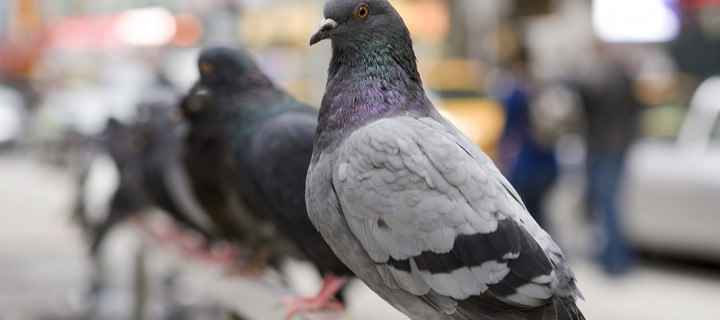In a study that makes initially makes you think, ‘what gave them that idea?’, scientists have learned pigeons can distinguish between healthy and cancerous tissue in x-rays and microscope slides.
According to research published in Plos One, the common birds have a 99% accuracy rating when detecting cancer cells.
Over the course of three studies, led by Richard Levenson, professor of pathology and laboratory medicine at the University of California Davis Medical Center, they learned pigeons have the brainpower to learn how to identify whether an image shows healthy or cancerous breast tissue.
 The first experiment involved eight pigeons that were shown 144 images, with and without colour, across various magnifications. The birds would peck either the yellow or blue buttons, indicating cancerous or healthy tissue respectively.
The first experiment involved eight pigeons that were shown 144 images, with and without colour, across various magnifications. The birds would peck either the yellow or blue buttons, indicating cancerous or healthy tissue respectively.
Correct answers were awarded with food, otherwise the pigeons would be presented the same image until they were right. Eventually, the pigeons can learn to identify tissues that are cancerous, and those that aren’t.
“With some training and selective food reinforcement, pigeons do just as well as humans in categorizing digitized slides and mammograms of benign and malignant human breast tissue,” Levenson told the International Business Times.
After a half-month of this memory-type of training, the pigeons accuracy rose from an initial 50% to an impressive 85%.
The pigeons were then presented with new images to rule out memorization as a possible cause for their success. They correctly identified the familiar and novel images 87% and 85% of the time.
Combining all the birds’ data – or ‘flock sourcing’ – rather than scoring accuracy individually, their success rate jumped to an insane 99%.
“The pigeons were able to generalize what they had learned, so that when we showed them a completely new set of normal and cancerous digitized slides, they correctly identified them,” Levenson explained.
Following the first experiment, the second and third tests yielded varying results. The second test was to see if they could recognize micro-calcifications – calcium deposits that are associated with the presence of cancer – in breast tissue. Again, the accuracy started at a 50/50 rate, and jumped to 85% after 14 days. The final test had the birds identify masses in mammograms. While some birds could recognize masses in previous images they’d seen, they for the most part could not identify masses as benign or malignant in the new images.
It’s not a simple test, even for humans. A panel of radiologists previously tested reached an 80% accuracy rate when viewing the same images.
If the results are indeed accurate, pigeons could be involved in helping researchers and engineers evaluate new medical imaging techniques.
“Pigeons may not be able to write poetry, but they’ve had millions of years to develop the abilities that they need to navigate a very complicated and dangerous world,” Levenson said in an interview Smithsonian magazine.
“So it doesn’t surprise me that they can do pathology!”












